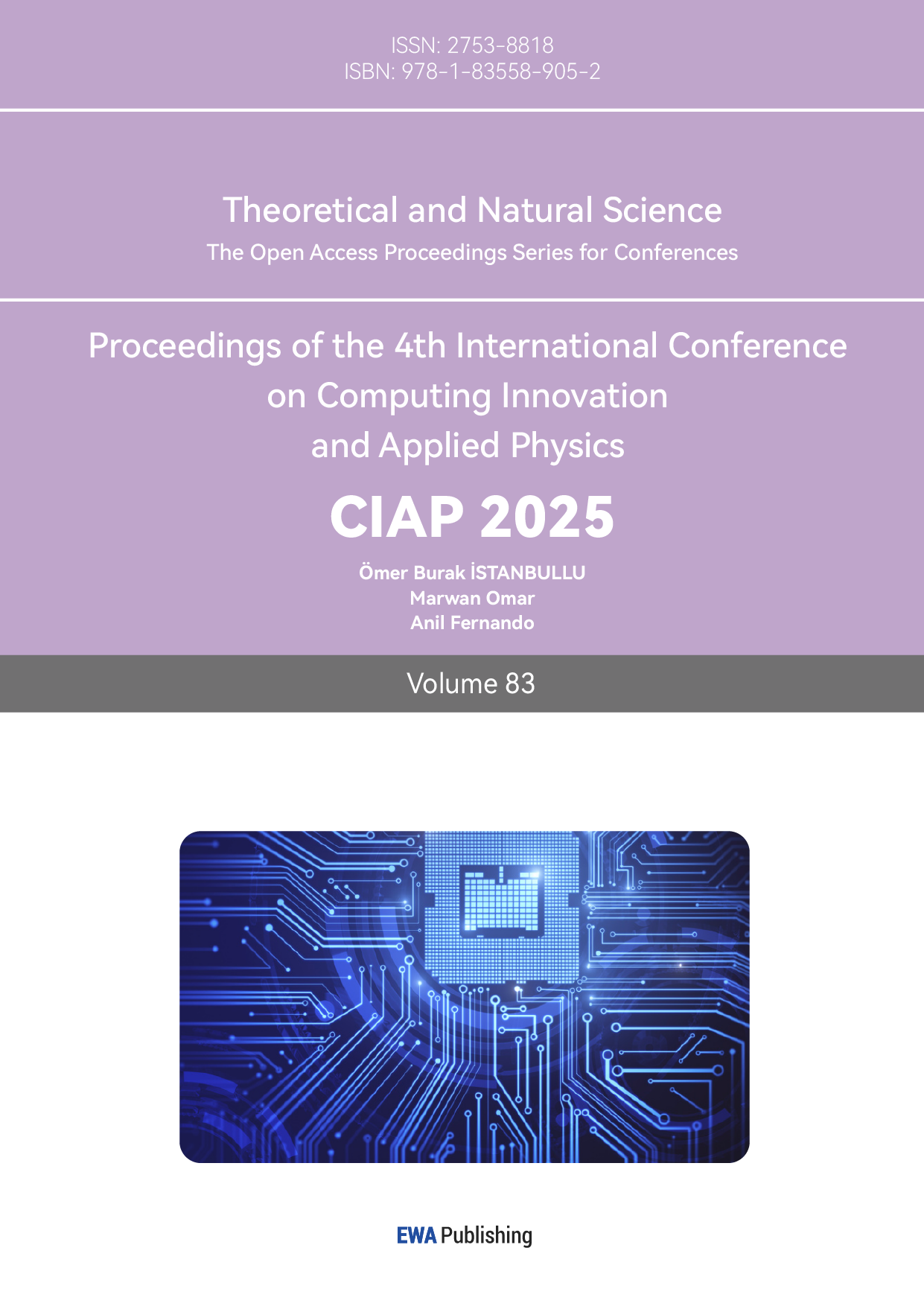Smart Glasses, Human-computer Interaction, Wearable devices
1. Introduction
Over the past decade, there has been an increasing emphasis on technology that facilitates human interaction, particularly in the realm of artificial intelligence[1]. As technology continues to advance, a variety of smart wearable devices are gradually taking over many of the functions traditionally fulfilled by smartphones. Modern wearable products integrate sensors and computing devices into clothing and fashion accessories, such as smartwatches and fitness bands. These smart wearables provide portability while offering a variety of features, such as heart rate monitoring, sleep tracking, and exercise recording. Among these wearables, augmented reality (AR) smart glasses have also emerged[2].
Milgram and Kishino define AR as a way to "augment" the real world with virtual objects[3]. Azuma further elaborates that an augmented reality system should combine real and virtual objects in a real environment, facilitate real-time interaction, and ensure that virtual objects are geometrically aligned with real objects[4]. Augmented reality has been widely applied in fields including tourism, entertainment, marketing, surgery, logistics, manufacturing, and maintenance[5,6]. AR smart glasses are wearable devices worn on the face, designed not only to provide clearer vision but also to leverage AR technology for deeper human-computer interaction (HCI). AR technology is usually associated with HCI, a field of study focused on the interaction between computers and users. Researchers in the field of HCI observe how people interact with computers to design technologies which can improve this kind of interaction in a novel way. It involves the study, planning, and design of the interaction between users and computers, aiming to improve the usability and user experience of systems and devices.
One example for innovative HCI devices are the AR smart glasses. Since Google released Google Glass in 2012, companies like Sony and Microsoft have launched their own AR smart glasses products. These devices use lenses or external extension devices for display and support wireless communication technologies like Bluetooth and Wi-Fi, enabling real-time information sharing through internet connectivity. As an interface for communication between smart glasses and users, a touch button or a natural language command processing method based on voice recognition is used. The front-mounted camera on the device can capture real-time photos or video data of the surrounding environment [7].
Numerous review papers have assessed the applicability of smart glasses across different fields. Some have evaluated the suitability of smart glasses in the medical field, some have focused on the technologies used by smart glasses applied to various services, some have addressed the ethical issues related to smart glasses, and others have analyzed the input methods used in previous research on commercial smart glasses, considering products, technologies, sensors, and other factors[8-10]. However, AR smart glasses, introduced around the same time as smartwatches and fitness bands, have not gained the same level of popularity.
Current literature mainly focuses on specific applications of smart glasses rather than on the challenges they face and the opportunities for optimizing interaction and hardware. This paper will first review the characteristics of two leading AR smart glasses—Google Glass and Microsoft HoloLens 2. Then, it will analyze the challenges faced by these technologies, and finally, discuss future directions for improving their usability and expanding their market reach.
2. Analysis of Google Glass and Microsoft HoloLens 2
2.1. Google Glass
AR smart glasses first gained significant attention as a consumer product with the 2012 release of Google Glass. As the inaugural AR eyewear product, Google Glass was met with both high expectations and skepticism. Designed to resemble conventional eyewear, Google Glass incorporated numerous sensors and external devices while maintaining the essential elements of traditional glasses. It featured a head-mounted display that projected information onto a small screen within the user’s line of sight. The glasses had built-in speakers, a microphone for voice commands, a camera for video and photo capture, and a touchpad on the side for navigating the user interface. Figure 1 depicts the appearance of Google Glass Enterprise Edition 2, and Table 1 details its specifications. It primarily utilized a touchpad, eye movement detector, and voice control for its operations.
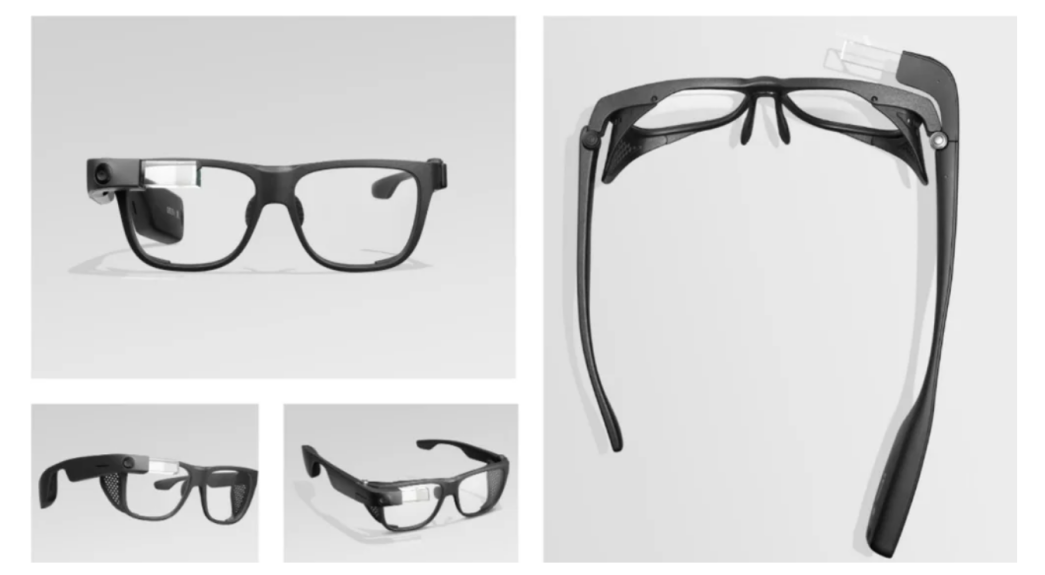
Figure 1: Google Glass Enterprise Edition 2[11]
Table 1: Specification of Google Glass Enterprise Edition 2[12]
Item | Google Glass Enterprise Edition 2 |
Storage | 32 GB |
CPU | Qualcomm XR1 1.7 GHz Quad-core |
Battery | 800 mA·h |
Sensor | Wi-Fi, Bluetooth, GPS, 6-axis gyroscope |
RAM | DDR4 3 GB |
Camera | 8-megapixel camera |
OS | Android Open Source Project 8.1 (Oreo) |
Weight | ~46 g |
Fluoroscopy method | Curved mirror (+Reflective waveguide): Google Light pipe |
Overall, Google Glass met the basic form and weight expectations of eyewear well, as Google's initial positioning of the product was as luxury smart glasses. However, it provided a unique user experience, integrating information display, voice control, photo capturing, navigation, and internet connectivity, enabling numerous tasks to be performed within a single pair of glasses.
Nonetheless, the lightweight design of Google Glass also underscored several limitations. Firstly, the battery life fell short, with an endurance of only 8 hours, which was inadequate for daily use. Many users also complained about comfort, indicating that the glasses were not suitable for prolonged wear and that the bulky structure impeded their view. Moreover, the small display on the right side faced insufficient clarity and poor visibility under bright light conditions. In terms of interaction, the product also fell short, with numerous users finding touchpad navigation unintuitive and voice command recognition inconsistent. In terms of cost, a single unit of Google Glass Enterprise Edition 2 retailed for $999, exceeding the price of many high-end smartphone brands.
Despite its shortcomings, Google Glass was relatively compact and lightweight for the technology it offered. Google Glass marked a significant step in the smart wearables industry, highlighting both the potential and challenges in making AR smart glasses practical for everyday use.
2.2. Microsoft HoloLens 2
Following Google Glass, Microsoft HoloLens 2 emerged as another widely discussed AR smart glasses product, undoubtedly taking a distinctly different approach in terms of appearance and target audience. From the appearance shown in Figure 2, Microsoft HoloLens 2 looks more like a helmet than glasses, in contrast to the everyday eyewear design of Google Glass. Table 2 details the detailed specifications of Microsoft HoloLens 2.
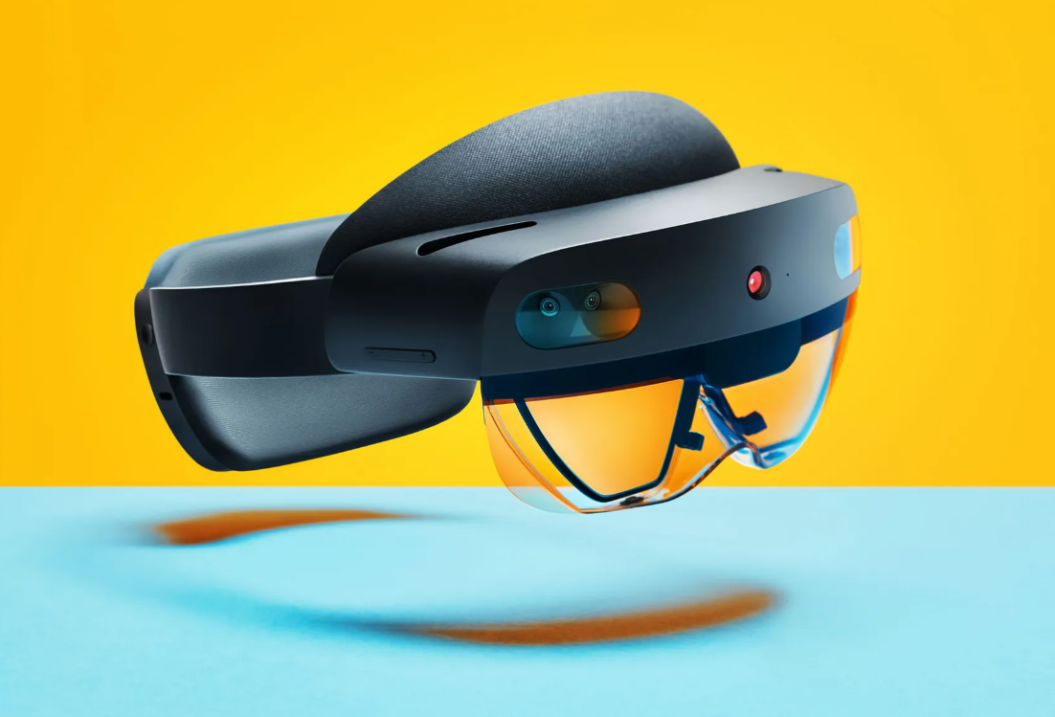
Figure 2: Microsoft HoloLens 2[13]
Table 2: Specification of Microsoft HoloLens 2[14]
Item | Microsoft HoloLens 2 |
Storage | 64 GB |
CPU | Qualcomm Snapdragon 850 |
Battery | 16,500 mA·h |
Sensor | Azure Kinect sensor, accelerometer, gyroscope, magnetometer, 6-DoF (Degrees of Freedom), GPS |
RAM | 4 GB LPDDR4x system DRAM |
Camera | 8-megapixel camera, 1080p video recording |
OS | Windows 10 |
Weight | 566 g |
Fluoroscopy method | Holographic waveguide |
As the product name implies, Microsoft HoloLens 2 uses a waveguide-based optical fluorescence see-through hologram method to provide digital imagery. To overcome limitations such as the restricted field of view associated with optical fluorescence methods, this product offers more than double the field of view compared to previous versions[15]. To achieve this, Micro-Electro-Mechanical Systems (MEMS) scanning technology using lasers and mirrors was applied. Microsoft HoloLens 2 primarily uses hand gesture recognition, eye tracking, and voice control to operate its functionalities. This product creates a mixed reality (MR) environment, enabling interactions that mimic touching real objects based on depth sensors powered by artificial intelligence. It is applicable not only to industrial fields like construction and maintenance but also to scenarios such as operating rooms. Overall, the design of Microsoft HoloLens 2 is more inclined towards professional applications, as evidenced by large orders from the military[16] and numerous publications highlighting its use in medical surgery. Compared to Google Glass, it has broader functionalities and a more robust operating system.
However, these advancements come with significant drawbacks. Firstly, in terms of battery life, with its numerous sensors and powerful CPU and display, HoloLens 2 consumes more energy, resulting in only three hours of usage. Its larger size and increased weight lead to even more severe comfort issues than Google Glass, making continuous use for two hours a burden for most users. Similarly, holograms are hard to see in bright light, and in dim light, holograms can drift due to the imaging principles. Regarding interaction, although the hand gesture tracking feature of Microsoft HoloLens 2 is highly comprehensive, it presents challenges such as high complexity of operations, occasional tracking failures, and an incomplete application ecosystem. In terms of pricing, Microsoft HoloLens 2's retail price on the official website is as high as $3,500, almost ensuring that this AR smart glasses product cannot enter the daily lives of ordinary people.
Nevertheless, Microsoft HoloLens 2 remains a successful product for its intended professional user base. It offers valuable insights into the next steps in the development of AR smart glasses and considerations for solving certain design challenges.
2.3. Comparative Analysis of Google Glass and Microsoft HoloLens 2
Google Glass and Microsoft HoloLens 2 represent two distinct approaches to AR smart glasses, each with unique strengths and weaknesses. Google Glass, with its lightweight and compact design, targeted the consumer market by resembling traditional eyewear and focusing on providing essential AR functions like information display and navigation. Its design prioritized portability and ease of use, but it fell short in battery life, comfort, and overall functionality. At a relatively high price, its features did not significantly differentiate it from other available smart devices.
Microsoft HoloLens 2, on the other hand, was built for professional use, with a focus on industrial applications, medical settings, and mixed reality environments. Its design sacrificed portability for enhanced performance and functionality, offering a broader field of view, advanced gesture tracking, and an array of sensors to create a fully immersive MR experience. However, these features resulted in significant drawbacks such as bulkiness, limited battery life, and a steep price, making it unsuitable for general consumer use.
In terms of interaction methods, Google Glass relied on a touchpad, voice control, and eye movement detection, while Microsoft HoloLens 2 employed hand gestures, eye tracking, and voice commands, providing a more immersive experience. Google Glass aimed for simplicity, whereas HoloLens 2 emphasized advanced control features at the cost of increased complexity.
Battery life was another major differentiator. Google Glass provided an average of eight hours, while HoloLens 2 offered only three hours due to higher power consumption from more advanced components. Additionally, Google Glass's lightweight design and simpler user interface made it more suitable for short-term, everyday tasks, while HoloLens 2, despite its superior mixed reality capabilities, posed comfort issues for prolonged use.
Cost was a defining factor for both products. Google Glass's price was high compared to other consumer electronics, but still much lower than HoloLens 2, which costs $3,500. This price disparity reflects their different target markets—consumers versus specialized professionals.
In conclusion, Google Glass and Microsoft HoloLens 2 highlight different priorities in AR smart glasses design: Google Glass focuses on portability, lightweight design, and consumer usability, whereas HoloLens 2 emphasizes functionality, immersive interaction, and industrial application. Future advancements in AR smart glasses may involve merging the strengths of these two approaches—achieving a balance between portability, advanced capabilities, and cost-effectiveness to appeal to both consumer and professional markets.
2.4. Analysis of the application of current AR smart glasses
According to the investigation by Dawon Kim et al., current AR smart glasses applications are primarily focused on healthcare and Human-Computer Interaction (HCI), as shown in Figure 3. Expanding the range of applications, especially by incorporating more healthcare-related features and improving the application ecosystem, will be crucial for the future development of AR smart glasses.
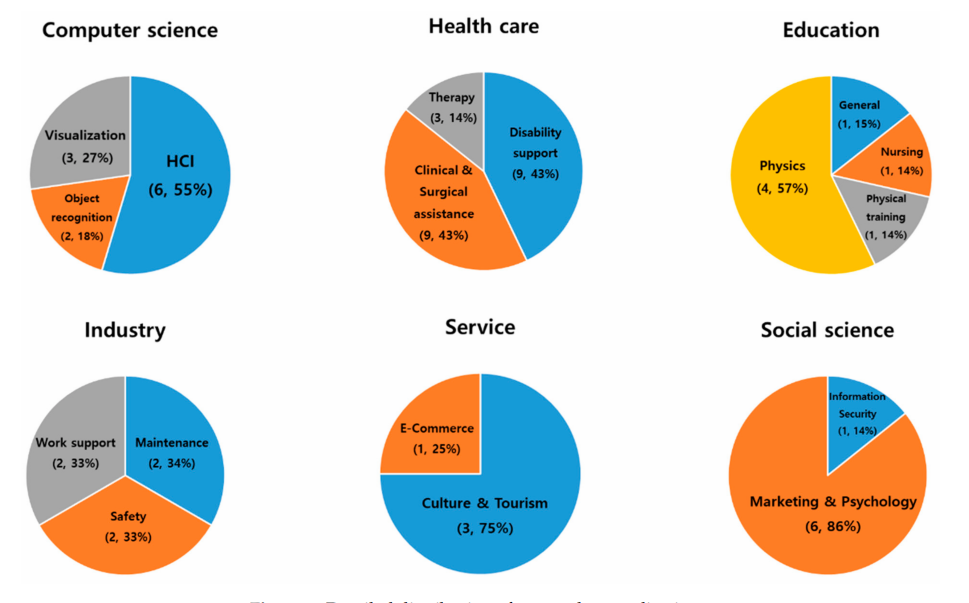
Figure 3: Detailed distribution of smart glass applications[17]
Furthermore, Figure 4 illustrates the usage frequency of various components of AR smart glasses, such as cameras and gyroscopes, in published research papers. Future upgrades to these components may be necessary to enhance user experience and adaptability in diverse conditions.
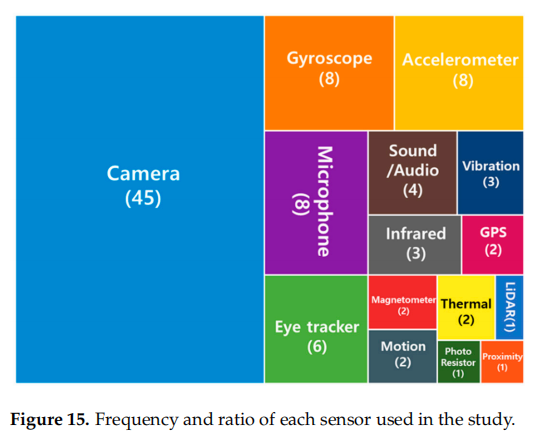
Figure 4: Frequency and ratio of each sensor used in the study[17]
3. Conclusion
Due to the inherent trade-offs in design, if we want rich features, we may face other difficulties. This is evident from the advantages and disadvantages of the two products me discussed above. It seems more prudent to temporarily separate the development of AR smart glasses into two branches: daily use and work-related applications. On one hand, this allows us to make functional trade-offs for different user groups, and on the other hand, it enables better service to the target audience. Google Glass and Microsoft HOLOLENS2 precisely correspond to these two different directions.
From the perspective of daily use, the structure and design of Google Glass are worth emulating. The minimalist design of Google Glass resembles traditional eyewear, providing a balance between aesthetics and wearing comfort. At the same time, it maintains a reasonable weight. With the premise of maintaining weight and style, considering the shortcomings mentioned above, the following enhancements are suggested: The first priority should be to extend the battery life to meet the demands of daily activities. This could involve adding fast charging and idle standby functions to extend battery life. Secondly, the material selection of the glasses should be be chosen with a focus on comfort for prolonged wear. Additionally, they should make the product more competitive, additional features should be introduced, such as holographic imaging functions, similar to those seen in Microsoft HOLOLENS2. Lastly, non-intuitive touch screen controls should be abandoned. The voice control recognition system should be further optimized, and gesture tracking used in Microsoft HOLOLENS2 could be incorporated to improve user experience.
From work-related applications, the powerful functions of Microsoft HOLOLENS2 provide better reference point. With its holographic imaging function, powerful processor, and reasonable control methods, Microsoft HOLOLENS2 meets the demands of various work environments. To make it even more suitable for work scenarios, several improvements could be considered: First, battery life must be extended to meet the needs of long working hours or achieve wireless charging methods that do not hinder work. Secondly, the appearance design should be as compact and lightweight as possible, while also incorporating materials that ensure comfort of wearing in long working scenarios. Additionally, in terms of imaging, measures should be taken to respond to various work environments, such as installing light shields or supplementary lights in strong or weak light scenarios. Lastly, in terms of interaction, the adjustability and flexibility of gesture tracking should continue to be optimized, the complexity of operation should be reduced, and the voice control recognition system should be optimized.
As for certain challenges apply universally to both types of smart glasses, expanding the range of applications and improving the application ecosystem seems to be inevitable for greater success. Also, future upgrades to components like cameras and microphone may be necessary to enhance user experience and adaptability in diverse conditions.
This study, using Google Glass and Microsoft HOLOLENS2 as examples, analyzes their usage scenarios, and the advantages and disadvantages in terms of hardware and interaction. By comparing the analysis of the two, it was found that current AR smart glasses face issues such as poor battery life, difficult-to-use interaction methods, and high production costs. Based on the conclusions drawn from the comparison and combined with some literature analysis, it is suggested that the future development of AR smart glasses should differentiate between usage scenarios and set functions accordingly. This can effectively manage and reduce development pressure. Additionally, to address common issues, AR smart glasses need to consider how to increase battery life, develop more reasonable and user-friendly interaction systems, and reduce production costs.
References
[1]. Due, Brian L.. "The Future of Smart Glasses: an Essay about Challenges and Possibilities with Smart Glasses", openalex
[2]. Friedman, V. (2017). Get ready for the internet of Louis Vuitton things. The New York Time Online. Retrieved from https://www.nytimes.com/2017/07/11/fashion/louisvuitton-smart-watch.html?smprod=nytcore-iphone&smid=nytcore-iphoneshare.
[3]. P. Milgramt and F. Kishinott, “Special Issue on Networked Reality, ” IEICE Trans. Inf. Syst., vol. E77–D, no. 12, pp. 1321–1329, 1994.
[4]. R. Azuma, R. Behringer, S. Feiner, S. Julier, and B. Macintyre, “Recent Advances in Augmented Reality, ” IEEE Comput. Graph. Appl., no. December, pp. 34–47, 2001.
[5]. G. Westerfield, A. Mitrovic, and M. Billinghurst, “Intelligent augmented reality training for motherboard assembly, ” Int. J. Artif. Intell. Educ., vol. 25, no. 1, pp. 157–172, 2015.
[6]. M. E. C. Santos, J. Polvi, T. Taketomi, G. Yamamoto, C.Sandor, and H. Kato, “Toward Standard Usability Questionnaires for Handheld Augmented Reality, ” IEEE Comput. Graph. Appl., vol. 35, no. 5, pp. 66–75, 2015.
[7]. Michalski, R.S.; Carbonell, J.G.; Mitchell, T.M. Machine learning: An artificial intelligence approach. Artif. Intell. 1985, 25, 236–238.
[8]. Mitrasinovic, S.; Camacho, E.; Trivedi, N.; Logan, J.; Campbell, C.; Zilinyi, R.; Lieber, B.; Bruce, E.; Taylor, B.; Martineau, D. Clinical and Surgical Applications of Smart Glasses. Technol. Health Care 2015, 23, 381–401. [CrossRef]
[9]. Klinker, K.; Berkemeier, L.; Zobel, B.; Wüller, H.; Huck, V.; Wiesche, M.; Remmers, H.; Thomas, O.; Krcmar, H. Structure for Innovations: A Use Case Taxonomy for Smart Glasses in Service Processes. In Proceedings of the Multikonferenz Wirtschaftsinformatik 2018, Lüneburg, Germany, 6–9 March 2018; pp. 1599–1610.
[10]. Hofmann, B.; Haustein, D.; Landeweerd, L. Smart-Glasses: Exposing and Elucidating the Ethical Issues. Sci. Eng. Ethics 2017, 23, 701–721. [CrossRef] 16. Lee, L.-H.; Hui, P. Interaction Methods for Smart Glasses: A Survey. IEEE Access 2018, 6, 28712–28732. [CrossRef]
[11]. https://blog.google/products/platforms-devices/glass-enterprise-edition-2/
[12]. Google Enterprise Edition Help. Available online: https://support.google.com/glass-enterprise/customer/answer/9220200?hl=en&ref_topic=9235678
[13]. https://www.wired.com/story/microsoft-hololens-2-headset/
[14]. Microsoft. Available online: https://www.microsoft.com/en-us/hololens/hardware
[15]. Ferreira, João J. et al. "Wearable Technology and Consumer Interaction: A Systematic Review and Research Agenda", Computers in Human Behavior 118 (2021): 106710.
[16]. Kress, Bernard C.; Cummings, William J. (May 2017). "11-1: Invited Paper : Towards the Ultimate Mixed Reality Experience: HoloLens Display Architecture Choices". SID Symposium Digest of Technical Papers. 48 (1): 127–131. doi:10.1002/sdtp.11586.
[17]. Kim, Dawon, and Yosoon Choi. "Applications of Smart Glasses in Applied Sciences: A Systematic Review", Applied Sciences 11.11 (2021)
Cite this article
Lin,W. (2025). Augmented Reality Smart Glasses: Current Challenges and Future Innovations in Wearable Technology. Theoretical and Natural Science,83,209-215.
Data availability
The datasets used and/or analyzed during the current study will be available from the authors upon reasonable request.
Disclaimer/Publisher's Note
The statements, opinions and data contained in all publications are solely those of the individual author(s) and contributor(s) and not of EWA Publishing and/or the editor(s). EWA Publishing and/or the editor(s) disclaim responsibility for any injury to people or property resulting from any ideas, methods, instructions or products referred to in the content.
About volume
Volume title: Proceedings of the 4th International Conference on Computing Innovation and Applied Physics
© 2024 by the author(s). Licensee EWA Publishing, Oxford, UK. This article is an open access article distributed under the terms and
conditions of the Creative Commons Attribution (CC BY) license. Authors who
publish this series agree to the following terms:
1. Authors retain copyright and grant the series right of first publication with the work simultaneously licensed under a Creative Commons
Attribution License that allows others to share the work with an acknowledgment of the work's authorship and initial publication in this
series.
2. Authors are able to enter into separate, additional contractual arrangements for the non-exclusive distribution of the series's published
version of the work (e.g., post it to an institutional repository or publish it in a book), with an acknowledgment of its initial
publication in this series.
3. Authors are permitted and encouraged to post their work online (e.g., in institutional repositories or on their website) prior to and
during the submission process, as it can lead to productive exchanges, as well as earlier and greater citation of published work (See
Open access policy for details).
References
[1]. Due, Brian L.. "The Future of Smart Glasses: an Essay about Challenges and Possibilities with Smart Glasses", openalex
[2]. Friedman, V. (2017). Get ready for the internet of Louis Vuitton things. The New York Time Online. Retrieved from https://www.nytimes.com/2017/07/11/fashion/louisvuitton-smart-watch.html?smprod=nytcore-iphone&smid=nytcore-iphoneshare.
[3]. P. Milgramt and F. Kishinott, “Special Issue on Networked Reality, ” IEICE Trans. Inf. Syst., vol. E77–D, no. 12, pp. 1321–1329, 1994.
[4]. R. Azuma, R. Behringer, S. Feiner, S. Julier, and B. Macintyre, “Recent Advances in Augmented Reality, ” IEEE Comput. Graph. Appl., no. December, pp. 34–47, 2001.
[5]. G. Westerfield, A. Mitrovic, and M. Billinghurst, “Intelligent augmented reality training for motherboard assembly, ” Int. J. Artif. Intell. Educ., vol. 25, no. 1, pp. 157–172, 2015.
[6]. M. E. C. Santos, J. Polvi, T. Taketomi, G. Yamamoto, C.Sandor, and H. Kato, “Toward Standard Usability Questionnaires for Handheld Augmented Reality, ” IEEE Comput. Graph. Appl., vol. 35, no. 5, pp. 66–75, 2015.
[7]. Michalski, R.S.; Carbonell, J.G.; Mitchell, T.M. Machine learning: An artificial intelligence approach. Artif. Intell. 1985, 25, 236–238.
[8]. Mitrasinovic, S.; Camacho, E.; Trivedi, N.; Logan, J.; Campbell, C.; Zilinyi, R.; Lieber, B.; Bruce, E.; Taylor, B.; Martineau, D. Clinical and Surgical Applications of Smart Glasses. Technol. Health Care 2015, 23, 381–401. [CrossRef]
[9]. Klinker, K.; Berkemeier, L.; Zobel, B.; Wüller, H.; Huck, V.; Wiesche, M.; Remmers, H.; Thomas, O.; Krcmar, H. Structure for Innovations: A Use Case Taxonomy for Smart Glasses in Service Processes. In Proceedings of the Multikonferenz Wirtschaftsinformatik 2018, Lüneburg, Germany, 6–9 March 2018; pp. 1599–1610.
[10]. Hofmann, B.; Haustein, D.; Landeweerd, L. Smart-Glasses: Exposing and Elucidating the Ethical Issues. Sci. Eng. Ethics 2017, 23, 701–721. [CrossRef] 16. Lee, L.-H.; Hui, P. Interaction Methods for Smart Glasses: A Survey. IEEE Access 2018, 6, 28712–28732. [CrossRef]
[11]. https://blog.google/products/platforms-devices/glass-enterprise-edition-2/
[12]. Google Enterprise Edition Help. Available online: https://support.google.com/glass-enterprise/customer/answer/9220200?hl=en&ref_topic=9235678
[13]. https://www.wired.com/story/microsoft-hololens-2-headset/
[14]. Microsoft. Available online: https://www.microsoft.com/en-us/hololens/hardware
[15]. Ferreira, João J. et al. "Wearable Technology and Consumer Interaction: A Systematic Review and Research Agenda", Computers in Human Behavior 118 (2021): 106710.
[16]. Kress, Bernard C.; Cummings, William J. (May 2017). "11-1: Invited Paper : Towards the Ultimate Mixed Reality Experience: HoloLens Display Architecture Choices". SID Symposium Digest of Technical Papers. 48 (1): 127–131. doi:10.1002/sdtp.11586.
[17]. Kim, Dawon, and Yosoon Choi. "Applications of Smart Glasses in Applied Sciences: A Systematic Review", Applied Sciences 11.11 (2021)





